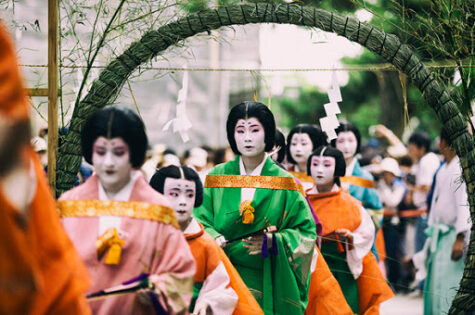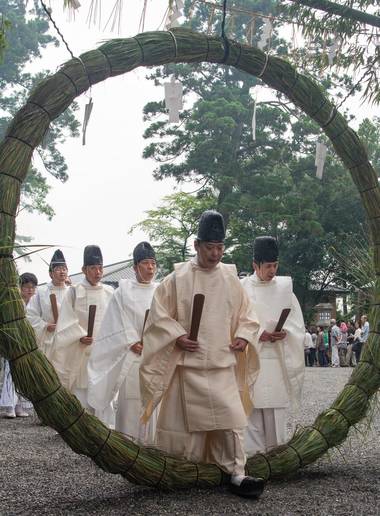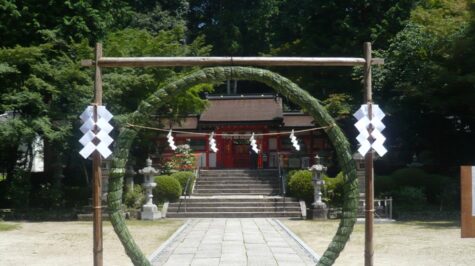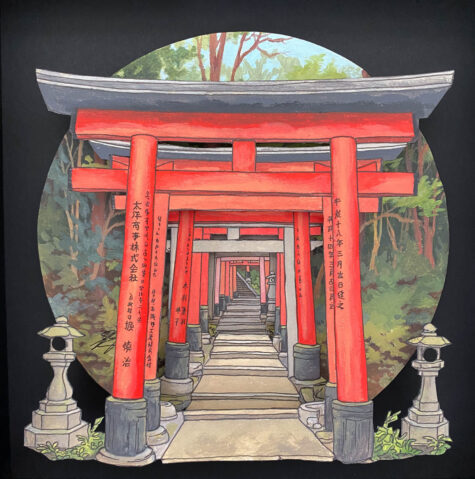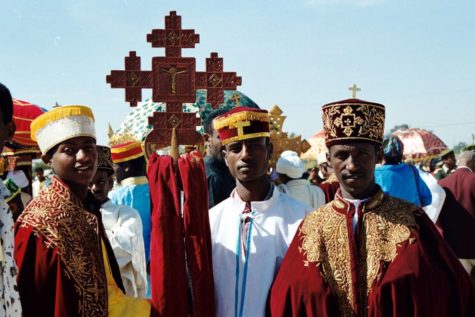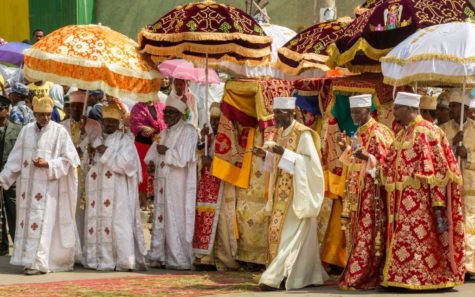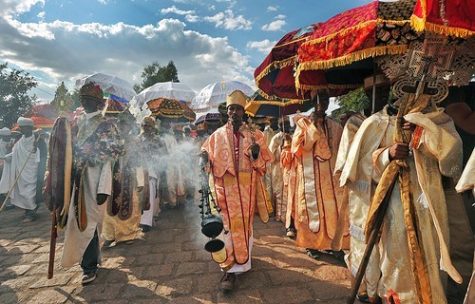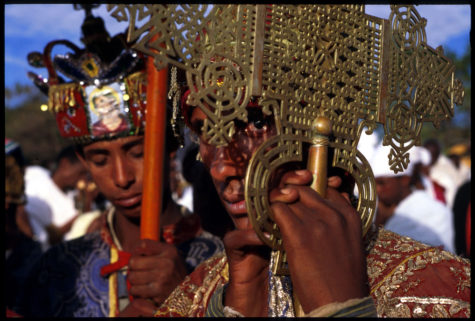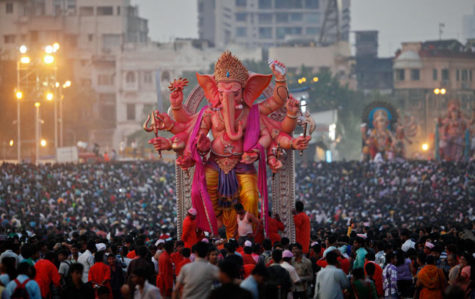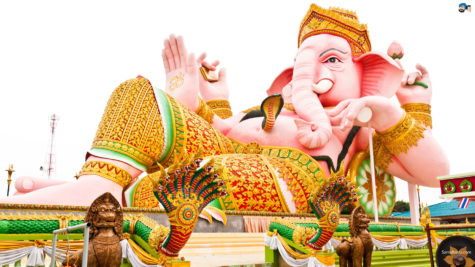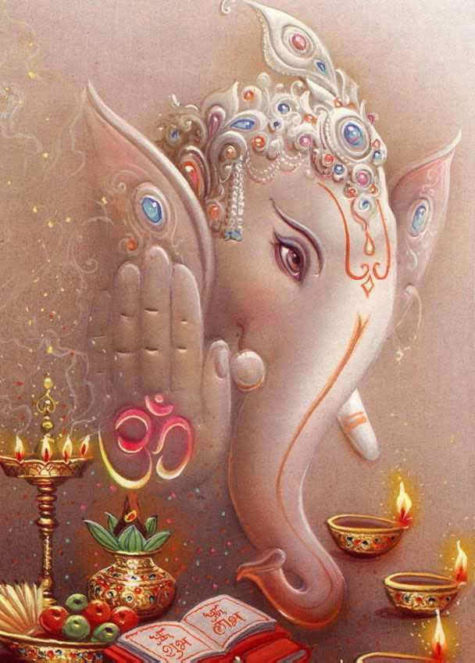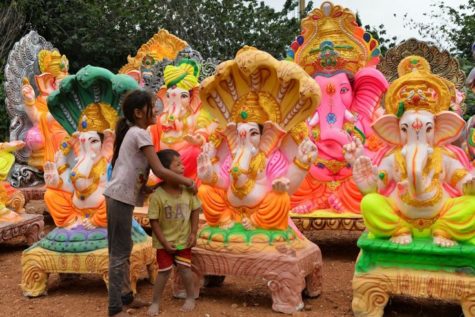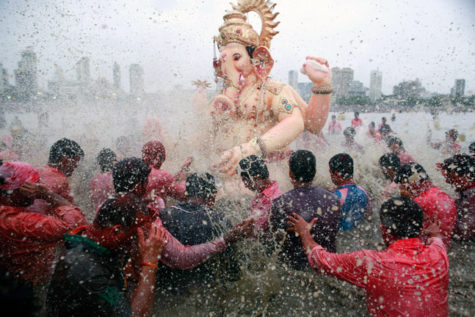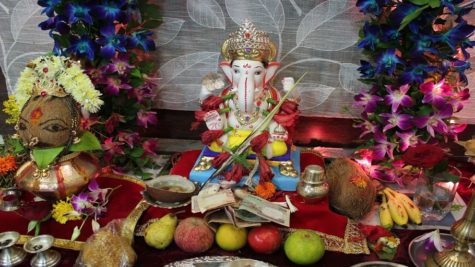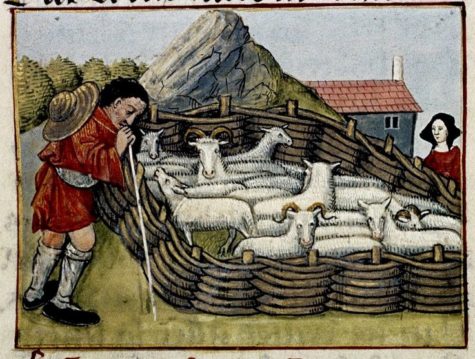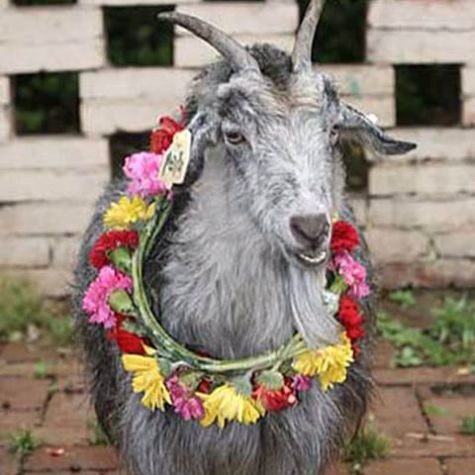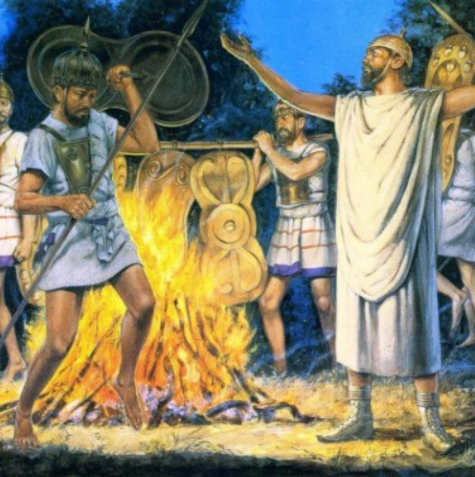Purification
According to Tibetan and Vedic astrology, there are a cluster of stars, called the ‘Rishi’ stars, that ‘appear’ for one week each year – usually during the 8th lunar month (September). According to Tibetan astrology, the Rishi stars will be ‘out’ this year from Sept. 9-15. In Tibetan this is known as ‘Karma Rishi.’
According to Hindu legend, these stars were once great sages of the past, who, upon their death, ascended up into the heavens and became these stars. When they are visible in the night sky, their light is said to possess special healing powers that transform all water into a healing nectar.
Some sources state these stars are the Ursa Major, or the ‘big dipper,’ also known as the Sapta Rishi stars, who are associated with the seven great Rishis of Vedic lore. Other sources say this is the Canopus star, which is associated with the Rishi Agastya, and is said to be the ‘cleanser of waters.’
Typically, Tibetan doctors and healers would place buckets of water outside during this time, then use this water for making their medicines. Lama Dawa remembers how His Holiness Matrul Rinpcoche – a great Tibetan physician – would then boil this water down, thus concentrating it, then use this water to make the herbal medicinal pills, and also to consecrate the water with healing mantras.
Another way of benefiting from this healing water is to bathe in pools, ponds or rivers during this time. Or, collect water in buckets and use that for bathing. Any water – whether it is ocean, river, stream, or water in pools, is imbued with the healing qualities of the stars.
This water can be used to make healing tinctures, or for giving to pets and plants. Even the water in our own bodies can be ‘blessed’ and purified by this special healing energy by exposing your body to the night sky when the stars are out.
It is a particularly auspicious time to do practices such as the Vajra Armor mantra, which is used to consecrate water, or Medicine Buddha mantras and offering pujas.
Prayer:
Rangrig Dorje Rinpoche offers this prayer and mantra to be said while taking a bath outside under these stars:
༈ཇི་ལྟར་བལྟམས་པ་ཙམ་གྱིས་ནི། ལྷ་རྣམས་ཀྱིས་ནི་ཁྲུས་གསོལ་ལྟར།
JI-TAR TAM-PA TSAM-GYI NI / LHA-NAM KYI-NI TRU-SOL TAR /
ལྷ་ཡི་ཆུ་ནི་དག་པ་ཡིས། དེ་བཞིན་བདག་གིས་ཁྲུས་བགྱིའོ།
LHA-YI CHU-NI DAG-PA YI / DE-ZHIN DAG-GI TRU-GYI O /
- Mantra:
ཨོཾ་སརྦ་ཏ་ཐཱ་ག་ཏ་ཨ་བྷི་ཥེ་ཀ་ཏ་ས་མ་ཡ་ཤྲཱི་ཡེ་ཧཱུྃ༔
OM SARWA TAT’HAGATA ABHISHEKA TA SAMAYA SHRI YE HUNG
- Aspiration:
འདི་ནི་ཁྲུས་མཆོག་དཔལ་དང་ལྡན། ཐུགས་རྗེའི་ཆུ་ནི་བླ་ན་མེད།
DI-NI TRU-CHOG PAL-DANG DEN / T’HUG-JE’I CHU-NI LA-NA MED /
བྱིན་རླབས་ཡེ་ཤེས་ཆུ་ཡིས་ནི། ཅི་འདོད་དངོས་གྲུབ་སྩོལ་བར་མཛོད།
JIN-LAB YE-SHE CHU-YI NI / CHI-DOD NGO-DRUB TSAL-WAR DZOD
Western Astrology:
Western astrologer, Terry Nazon, offered this information about the Sapta Rishi Stars:
“They are the fixed stars of Ursa Major the Big Dipper. They are always visible…but during that time in September as the constellation late Leo and early Virgo is right above us in the night sky…they are closest then and right above us.
Because the earth is moving and just like the moon moves across the night sky so will the big dipper…it can also be that the Sun is activating them…for planets and stars to be effective they have to be triggered by a planet or star like the sun.
If you are “charging” water you will want to place the water where it receives the most exposure. For instance maybe there’s tree blocking the Big Dipper in your front yard…and remember, we are made up of 60 % water and in ancient Kabbalah, the text said to bath ourselves in this planetary “rain” they called it.”
The Rishi stars:
- 1. Dubhe The Bear:
Astrology, arrogance, psychic power, destruction; aka Krathu, one of the 7 Rishis (Hindu sages) in Ursa Major; Bast Isis, the Egyptian goddess; “The Eye”; “Heaven’s Pivot”
- 2. Merak:
Prudent, restrained, mistrustful, self-controlled (but angry when roused), love of command, power to achieve, good with animals; Pulaha, one of the 7 Rishis (Hindu sages) of Ursa Major
- 3. Phecda:
Civilising influence, tamer of beasts, transmission of divine knowledge; Pulasthya, one of the 7 Rishis (Hindu sages) of the Great Bear, Ursa Major; bloodbaths, assassinations, riots, sexual perversion
- 4. Tania Borealis:
In the right hind paw of Ursa Major, along with Tania Australis, this star was part of an early Arabian constellation, The Gazelle, of which this group is the “Second Leap”. The Great Bear is mainly martial in action, considered unfortunate for nations and kings.
- 5. Megrez:
Spiritual sight; creativity; violence; Atri, one of the 7 Rishis (Hindu sages), the ruling star of the Great Bear, Ursa Major
- 6. Alioth, The Black Horse:
Suicide among women; danger in pregnancy; Angirasa, one of the 7 Rishis (Hindu sages) in Ursa Major
- 7. Mizar:
Connected with fires of a catastrophic extent and mass calamities; Vasishta, one of the 7 Rishis (Hindu sages) of Ursa Major
- 8. Alula Borealis:
Hindmost foot of Ursa Major. As the northern Alula, it is more fortunate. Associated with female infidelity & revenge. The Great Bear gives a quiet, prudent, suspicious, mistrustful, self-controlled, patient nature, but an uneasy spirit; great anger when roused.
The Canopus Star:
The Canopus star is the second brightest star after Sirius. In Indian Vedic literature, the star Canopus, known as the ‘smiling star’ is associated with the sage Agastya, one of the ancient rishis (the others are associated with the stars of the Big Dipper). Agastya, the star, is said to be the ‘cleanser of waters’ and its rising coincides with the calming of the waters of the Indian Ocean.
Canopus is a bright star most easily visible in the Southern Hemisphere. It is in the constellation Carina, the keel. The star is of a fairly rare type, considered a class F giant on the main sequence of stars. This means it has a mass close to that of the sun.
Because the star’s spectral class is not well studied, it is difficult to establish how far away Canopus is. Parallax measurements with the Hipparcos satellite have established it to be about 313 light-years away.
Canopus can’t be seen from most locations in Europe and North America. Observers in northern latitudes south of 37°N can find the star below Sirius in the southern sky on winter evenings. Canopus is at its highest in February around 9 pm. It is located about 36 degrees to the south of Sirius.
In science fiction, Canopus is perhaps best known for being the parent star for Arrakis, a dusty desert planet in the “Dune” universe.
Canopus is used in space navigation to adjust the position of spacecraft in space. Many spacecraft are equipped with a special camera called the Canopus Star Tracker.
Sources:
Nagoshi no Harae, literally “summer passing purification ceremony” is one of Japan’s most celebrated great rituals and is steeped in tradition. The purification ritual has been performed at shrines since ancient times, in the hope of atoning for misdeeds that have been committed in the first half of the year and to pray for the latter half yet to come. It is a chance for redemption and a new start for the remainder of the year.
Traditionally performed on the last day of the sixth month, the custom is still enjoyed today in modern Japan, every June 30, at many shrines across the country. Because the Nagoshi-no-Oharai falls between rice sowing and harvest, this ritual is a time of relaxation and community celebration.
In order to participate you can join in on June 30th when the priests of Shinto shrines all across Japan lead large crowds in the practice, or you can try it by yourself.
Create a ring of Miscanthus reeds, (also called Chinese Reed, Ramie, or Elephant Grass). Simply bow, pass through the wreath and circle back to the front from the left, pass through again to the right, then pass through one last time. Just remember left, right, left like the sign for infinity ∞. As you pass through the ring, reflect on your year.
The key to all rituals performed in Shinto is the harmony between heaven and earth. The rituals create the space and process whereby you can return to the fullness of the inborn Kami — the divine in each person.
In Shinto, the Kami is the object of reverence. A word that cannot be translated
adequately into English, its most common translation is “God.” However, Stuart D. B. Picken writes in his “Historical Dictionary of Shinto” that “Divinity, the divine, or the mysterious are better candidates because they are less specific in the imagery they generate.”
Where to participate in Kyoto
Several of Kyoto’s most famous and popular shrines host the event including:
- Kitano Tenmangu Shrine, home to the largest chinowa in Kyoto (approximately five meters in height), which is set up at the shrine gate.
- Kamigamo Shrine also performs the ritual as well as handing out paper dolls to the participants, which are floated down the river to rid you of misfortune.
- Yoshida Shrine is another popular host of the event, where participants who offer a doll amulet to the deity are gifted a wreath in return.
The Ritual at the Tsubaki Grand Shrine
Tsubaki Grand Shrine was established over 2,000 years ago and has been the site of the same daily Shinto purification rituals ever since, including the Nagoshi-no-Oharai.
During the Nagoshi-no-Oharai, the Torii pathway leading to the Tsubaki Grand Shrine is transformed with hundreds of people attending this ritual. The Torii gateways are a distinctive symbol of Shinto and represent a gateway between heaven and earth. Although stylized over the centuries, the original gateway was most likely a simple rope hung between the trees or posts to mark an area considered sacred.
At the Tsubaki Grand Shrine, there are a succession of Torii leading up to the Honden, (the main worship hall), where the rituals are conducted. This Honden holds about 75 people and is built in the classical style of plain, unpainted Japanese cypress, with a stylized roof distinguished by ridge posts.
Along the sides of the gravel Torii pathway hang ropes tied with white paper streamers, called gohei, signifying the boundary of sacred space. The gohei are made in different sizes by the Shinto priests and are also considered sacred.
A large sacred ring, called chi-no-wa, made of loosely twisted Miscanthus reeds, is constructed in front of the Honden. There are numerous purification rituals as people wait for the start of the Nagoshi-no-Oharai.
The Nagoshi-no-Oharai ritual begins in the main worship hall with the traditional Oharai prayers and purification.
During the purification ritual, the Shinto priests cascade kirinusa (small cut pieces of sacred rope and cloth) onto all the worshippers in the Honden. Some priests then run out of the Honden and through the crowd lining the pathway, tossing kirinusa on them.
When they complete their daily Oharahi-no-Kotba, the worshippers line the Torii pathway in anticipation of the afternoon ritual service. Following the Ohara-no-Kotobai, the chief priest (Guji) leads all the other priests, who carry crates of paper dolls, three times through the chi-no-wa in a figure eight pattern.
Worshippers follow behind a reed boat (kaya-fune) carried by a senior priest. They know their routine in the ritual, a yearly tradition that passes from generation to generation, and wait patiently in silence for their opportunity to walk through the circle of reeds. This gentle, respectful procession reflects the learned knowledge of all participants.
Passing though the chi-no-wa, although complex, is executed smoothly and is amazing to watch. The paper dolls in the crates come from all those who have visited the Tsubaki Grand Shrine in the previous six months with special prayers, impurities, pollution, uncleanness, concerns or indulgences called tsumi. Each paper doll includes the name of the person, his or her birthday and a personal stamp.
(The Japanese use stamps in their daily lives to identify paperwork and bills. When you receive or pay for something, you get the stamp of the person who processed it, confirming that you have seen the document.)
These paper dolls are symbolic of a person’s tsumi and have been purified at the Tusbaki Grand Shrine before they’re carried by the Shinto priest through the circle of reeds and then to the riverbank.
After completing the walk through the circle of reeds, the priests go to a location on the river close to the shrine. Over the days leading up to the ritual, the priests have created a sacred space along the riverbank by hanging rope with gohei across the river. Along the far shoreline, a priest also places a large pole with hanging gohei.
In all Shinto purification rituals, sake and salt are used. The Guji (chief priest) sprays these into the sacred river water while reciting prayers. The Guji also make an offering to the Kami by presenting a Japanese evergreen – sakaki –the same offering presented at all Shinto shrines.
After the river purification is completed, the priests fling the paper dolls into the air like hundreds of white petals and let them float to the sea, signifying the release of impurities.
A Shinto Prayer for Purification
The kami shall lend ear to the sacred words.
No offences shall remain unpurged.
They shall be scattered and blown afar
by Heaven’s winds
descending through the eight-fold clouds.
Morning mists shall be cleared
by the morning winds,
Just as the mists of evening shall be swept away
by evening winds.
As a large ship anchored in a harbor
casts off the morrings from its bow
and is released into the great expanse of ocean,
So shall we be released of our impurities
As the trees of the thick grove rooted yonder
are cleared away with a sharp sickle~
So shall our offences be purged and swept away.
We pray that these impurities be swept away and that
The kami grant us purification to restore
the natural order.
Let the impurities be swept away by the kami Seoritsu Hime
Who dwells in the swift rivers that cascade
from the top of the high mountains
and from the top of the low mountains,
Carrying the impurities out to the great expanse of ocean;
There, where the river meets the great sea,
Hayakitsu Hime, who dwells
within the whirling myriad tides,
Shall open wide and swallow the impurities;
Let the door open, then, from the bottom country,
And the kami called Ibukido Nushi shall cause
great winds to expel the impurities
to the root country.
There, the kami called Haya Sasura Hime,
the quiet wanderer of the root country,
will sieze and dissolve the impurities,
Ridding us of imperfection and
returning us to our pristine natural state.
Grant us purification, grant us clarity.
We pray to the Heavenly Kami
and to the Earthly Kami ~
To all the myriad of kami
we recite this norito with awe and reverence.
Please hear these humble words.
Minazuki
The seasonal sweet minazuki, a type of steamed cake topped with azuki beans, is often sold during the ritual period. It is traditionally eaten on June 30th to ward of evil, ill health and bad luck for the second part of the year. The colour of minazuki is said to resemble ice to cool you from the summer heat. Here’s a recipe from Tokyo Pony.
You will need:
- A square container around 4×4 inches
- Something to steam the wagashi in (I used a bamboo steamer)
- 15g of kuzu root ( if it is not in a powder and more in chunks crush into a powder)
- 15g of glutinous rice flour ( the kind for making dango )
- 30g of sifted plain white flour
- 30g of unrefined caster sugar
- 100ml of water
- x1 can of sweet red beans
Combine the kuzu powder and dango flour then add a little of the water to make a paste, then add the rest and mix together. Then add in your flour and sugar and mix to combine.
Fill your container with water and tip it out ( this will just stop your wagashi from sticking ) then fill your container with your mixture, keeping a few tablespoons for later.
Place your container in a steamer and steamer over simmering water for about 20 minutes.
After this time take out your container from the steamer and add around 3/4 of the can of your sweet red beans to the top, spreading them out. Add the few spoonfuls of the remaining mixture you saved over the beans and pop back in the steamer for a further 10 minutes.
Remove and allow to cool in the fridge. Cut the wagashi while it in still in the container. If you cut it in an X from corner to corner, you will have 4 triangles. Carefully ease out the first piece, once you have one out the others are easily removed. I wouldn’t recommend tipping it upside down as you may spoil the look of your minazuki.
There you have it. They are nice enjoyed with a matcha tea you could even dust the top with matcha or kinako if you like.
The History of Nagoshi no Harae
Nagoshi no Harae was first established during the Nara Period (710-794) and was traditionally performed on the last day of the sixth and twelfth months of the lunar calendar at the Imperial court and Shinto shrines. The great purification at the Imperial court briefly came to an end due to the Onin War (1467-77), but continued to flourish at shrines. At some point, the twelfth month purification (harae) was abandoned and the sixth month purification (nagoshi no harae) became grander in scale.
The origin of the ritual comes from an ancient Japanese legend about the wandering god Susano’o no Mikoto. A poor man, Somin Shorai, showed the disguised god every luxury he could afford when asked for a place to stay the night. In return for housing the god for the night, he was given a chinowa wreath woven from reeds and instructed to wear it for protection.
In a turn of good luck, Somin and his descendants managed to escape plague and illness that befell the land. This story led to the practice of passing through the large Nagoshi no Harae chinowa wreath to ward off disaster and misfortune.
Sources:
- Culture Trip
- Tsubaki Shrine
- Starr King School
- Discover Kyoto
- Shinto Norito
Ethiopia follows the Ethiopian calendar, consequently Christmas falls on January 7th and Epiphany on January 19th. Timkat, Ethiopia’s Epiphany celebration, is a celebration of the baptism of Jesus in the Jordan River. The festival lasts for three days and is at its most colorful in the capital, Addis Ababa, where everyone gets involved in the celebrations.
As part of the celebration, a ritual baptism is done. A stream or pool is blessed before dawn. The water is sprinkled on some participants, while other immerse themselves in the water to symbolically renew their baptismal vows.
Pilgrims come from far and wide to take part in the festival and witness the re-enactment of the baptism. All over the country large crowds assemble as the religious festivities commence, with spectacular processions, song, dance and prayer.
In Addis Ababa, the festival is particularly spectacular. The streets are adorned with green, red and yellow to represent the Ethiopian flag and priests walk through the streets holding colorful and richly decorated umbrellas.
The religious ceremony commences on the first day when the Tabot, a model of the Ark of the Covenant, which is present on every Ethiopian altar (somewhat like the Western altar stone), is reverently wrapped in rich cloth and borne in procession on the head of the priest.
The Tabots are then carried to the river in a procession led by the most senior priest of each church, who carry the arks on top of their heads. The Divine Liturgy is celebrated near a stream or pool early in the morning (around 2 a.m.). Then the nearby body of water is blessed towards dawn and sprinkled on the participants, some of whom jump in the water to renew their baptismal vows.
The second day of Timkat marks the main celebrations, with Orthodox Ethiopians from every segment of society merrily march through the streets in a riot of color, singing, dancing and feasting. All but one of the Tabots are returned to their respective churches.
On the third day of Timkat, known as the feast of St. Michael the Archangel, the Tabot of St. Michael’s Church is escorted back to its church in colorful procession and festivities.
About the Tabot
The Tabot symbolizes the Ark of the Covenant and the tablets describing the Ten Commandments, which God gave to Moses on Mount Sinai to serve as the core principles of the moral behavior for humanity. The Tabot, which is otherwise rarely seen by the laity, represents the manifestation of Jesus as the Messiah when he came to the Jordan for baptism.
The original Ark of the Covenant is said to be under permanent guard in Northern Ethiopia, protected by priests who have sworn never to leave the sacred grounds.
Sources:
Burning the Devil or La Quema del Diablo is a tradition held every December 7, at 6:00 in the evening sharp, families build bonfires outside their homes and burn effigy of Satan. It is a tradition that many Guatemalans take part as a way to cleanse their home from devils that lurk in their home, creeping behind the furniture or hiding under the bed.
La quema del diablo can be traced to colonial time, a tradition that started since the 18th century. Held on the eve of the Feast of the Immaculate Conception and as a prelude to holiday season, those who could afford it adorns the fronts of their houses with lanterns, but for those who have lesser means builds a bonfires from their trash to celebrate the occasion.
A symbolical tradition with a belief that the fire burns the devil serves as purifying element, as the Virgin Mary was the blessed one to conceive baby Jesus must be free from any form of evil, therefore the event serves as “burning the devil” to clear the way for Mary’s feast.
Though the celebration may sound fun, it is controversial especially for the environmentalist groups. Back in the days, mostly paper were burned for the “cleansing ritual”, but now, piles of rubbish are mostly made of plastic and rubber that causes air pollution.
Over time the tradition evolved, from burning piles of garbage and pieces of furniture to being replaced by the effigy of Satan in a form of piñatas.
The tradition has special significance in Guatemala City because of its anticipation of Feast of the Immaculate Conception, the patron saint of the city. Along the street of Zona 1, the historic city center, many vendors pile the street selling stuffs associated with La Quema del Diablo, from firecrackers to simple and intricate devil piñatas. In different parts of the city, people celebrate and burn their own devil piñatas.
The tradition continues, as the idea is to burn all the bad from the previous year and to start anew from the ashes. It is widely observed throughout the country, The Devil is burned at the stroke of six. In Antigua, the former capital of the country, a devil three stories tall is constructed and burned in the city square.
A variation of this tradition is held in San Antonio Palopo. In this very unique celebration, they carry a statue of Maximón around town with a noose around his neck, they locals then hang Maximón by his neck in front of Catholic church, douse him with gasoline, and set him on fire. This is the local way of showing respect to the Christian god.
Setting people on fire has been a way of ridding the town of evil doers for many centuries. As soon as the Spaniards settled in Guatemala they brought with them the Christian religion. The Christian religion frowned on bloodshed. So instead they burned evil doers alive to kill them. This way they did not shed blood and therefor committed no sin.
Most of the inhabitants still pray to both the Christian and Mayan gods and deities such as Maximón or ancestors. They often ask for healing, wealth, help with love and sexual fertility.
The locals say they pray to both just in case one god does not grant their wishes the other might. This happens with both evangelical and Catholic believers. ( Not all, but the majority) This is kept secret for fear of discrimination from others.
While the many of the locals pray to both god and deities they publicly denounce Maximón shortly before Christmas by dragging him around the village then hang him with a noose and set him on fire.
The political version of this festival:
Guatemalans burn traditional devil puppets to start their Christmas celebrations. The ceremonial burning of devils started in the 16th century and is meant to chase away bad spirits. And in 2016, US president-elect Donald Trump was a big hit. But not in a good way.
Revelers in Guatemala set ablaze cardboard piñata of Trump wearing devil horns. In fact, piñata makers said Trump is far and away the best-seller. Trump’s hardline stance on immigration during his election campaign, including a promise to build a wall along the US-Mexico border, has drawn anger from Latin Americans in the US and around the world.
So this is a way to vent out the anger? It can be. Guatemalans believe the practice of torching the devil helps banish bad spirits from their homes and neighborhoods.
Sources:
Vinayaka Chaturthi – also known as Ganesh Chaturthi – is a Hindu holiday festival that is observed on on the fourth waxing moon day during the month of Bhadrapada. This is around August or September on the Gregorian Calendar. The purpose of this festival is to honor the very popular Hindu God Ganesha, also known as Vinayaka.
- Dates vary from year to year.
- In 2018, the festival runs from September 12 thru Sept 23.
The concept of Ganesh Chaturthi is that Ganesha comes to the home of his devotees on Ganesh Chaturthi day. He brings auspiciousness, hope, success and happiness to all homes. During His brief stay, He removes all obstacles. While returning He takes with him all problems and unhappiness.
Vinayaka Chaturthi is a festival that allows people to call on the power of Ganesh and to receive help from him in removing all of the obstacles that hinder their spiritual or mental path. It is also a time to ask for help in developing spiritual strength and resolve. It is a festival of great hope, joy and celebration that can be enjoyed by everyone regardless of class or wealth.
This remains one of the most widely celebrated festivals in the Country, partly because Ganesh is one of the most popular deities for worship. Ganesha, the elephant-headed son of Shiva and Parvati, is the supreme god of knowledge, wisdom, prosperity and good fortune. He is the Lord who is first worshiped before any holy occasion or puja.
His blessings are often invoked at religious ceremonies as he is the one who can remove all obstacles to success, particularly when people are starting a new business or enterprise. Ganesh is known as the giver of fortune and one who can help to avoid natural calamities. Ganesh is also the patron god of travelling.
Lord Vinayaka is revered as the preserver of all good things and prevents Vigna (meaning obstruction/bad omen). His motto is Shubh-Laabh (good prospect and good prosperity).
The Significance of the Festival
Hindus believe that during Ganesh Chaturthi, Lord Ganesh visits his people on the earth to personally attend to their prayers. Therefore the divine energy of Lord Ganesh descends on the earth in large measures during the event. The idols of Ganesh newly bought and installed act as antennas to receive the energies of Lord Ganesh and transfer them to the people during worship. After the worship, this is why the idols specially installed for the puja are immersed marking the sendoff.
How the Ganesh Chaturthi is celebrated:
Ganesh Chaturthi is celebrated with great devotion all over India. People bring home murtis (Idols) of Lord Ganesha and celebrate the festival by worshiping the Lord in a special way for a day and a half, 3 days, 5 days, 7 days or 11 days depending on the family tradition and commitment of each individual.
In certain parts of India, such as Andhra Pradesh and Maharashtra, the festival is celebrated for ten days and is a very public occasion. Elsewhere it may celebrated in homes, where hymns are sung and offerings made to Ganesh. Sweets are a common offering as Hindu legend has it that Ganesh liked them. On the last day of worship the idol is taken out in a colorful and musical procession to be immersed traditionally at a beach.
Rituals during the festival include:
- Pranapratishhtha – the process of infusing the deity into a murti or idol.
Several months before the start of Vinayaka Chaturthi, a large clay statue of Ganesha is crafted. There is no set size limit for this murti, it can be smaller than an inch or be over twenty feet tall, depending on the person making it. This murti is then either placed in homes or set up in specially made tents so that people can pay respect to it.
If you are interested in making one of your own, here’s a link to a short simple tutorial on how to make one out of paper mache. Some artistic ability is helpful but not required. Make A Paper Mache Ganesh
Ganesh Chaturthi starts with the installation of these Ganesh statues in colorfully decorated homes and specially erected temporary structures mantapas (pandals or colorful temporary shrines) in every locality. The mantapas are decorated specially for the festival, either by using decorative items like flower garlands, small banana saplings, lights, etc or are theme based decorations, which depict religious themes or current events.
The statues are worshiped with families and friends. The priest, usually clad in red silk dhoti and shawl, then invokes life into the statue amidst the chanting of mantras. This ritual, also known as Pranapratishhtha, is done to breathe life into the idol.
- Shhodashopachara – 16 forms of paying tribute to Ganesha.
After life is breathed into the image of Ganesh, people pay respect to the murti by offering it all kinds of different items. The offerings include 21 durva (trefoil) blades of grass, red flowers, coconut, jaggery, 21 modakas. The statue is anointed with Kumkum and Sandalwood paste. Vedic hymns from the Rig Veda, the Ganapati Atharva Shirsha Upanishad, and the Ganesha stotra from the Narada Purana are chanted.
For the next ten days, the statue is worshiped.
- Uttar Puja – saying farewell before the murti is moved.
Uttar Puja is performed in order to provide a farewell to Lord Ganesh just before the immersion. Here is the step by step procedure of Uttar Puja.
Light a lamp near the idol and decorate the idol with flowers. The puja will consist of offering Achamaniyam (water to drink), Sankalp (determination), chandanarpan (sandal paste), pushpa puja (puja with flowers), Durvarpan (offering durva grass), dhopp and deep darshan (offering incense and camphor light), Nivedan (offering some dishes and fruits). Say the prayers, chant Ganesh mantras and then do arati. Then do namaskar and move the idol a little with your right hand to mark the conclusion of uttar puja.
- Ganpati Visarjan – immersion of the idol in the river.
On the eleventh day, after the Uttar puja, the Ganesh idols are taken in procession with a huge fanfare to the water bodies. The crowds shout the names of Ganesh in ecstasy and make the procession a colorful and vibrant event. The idols taken in the procession are of different sizes, models and colors. They are carried through the streets for all to see. When this has concluded, people once again pay homage one last time before they are taken to the river and submersed.
The divine energies in the idols are transferred to the waters and then to the larger world. Therefore through the process of Visarjan, three objectives of the devotees are fulfilled namely saying thanks to Ganesh for the favors received, giving a sendoff to the Lord and sending the divine powers of the Lord for the benefit of all.
The idols are immersed one by one in the waters either manually or with the help of a crane. Usually, curd rice or puffed rice is made a bundle and sent along with the idol as a mark of giving food for the deity to have while journeying. After the visarjan, some sand is collected from the spot and sprinkled around the home.
- Alternatively:
Many of the Ganesh idols will be placed outside under Bodhi Trees (Sacred Fig). The Bodhi tree is revered as a great source of remedies and is used to treat up to 50 different ailments. It also has a unique ability in that it can produce Oxygen at night-time instead of Carbon Dioxide. These healthy aspects of the tree make it a popular place for people to go to worship, as it is seen a great healer to naturally cure illnesses.
Performing A Puja At Home:
Every Hindu puja starts with the invocation of God in the object of worship in order to accept the puja and prayers. After the puja, there is a ritual called ‘Yathasthan’ meaning giving a sendoff to the deity worshiped. This is the spirit and logic behind Ganesh Visarjan also. Spiritually, this process prepares a man to move from the form to the formless state of God.
Here are the things which you will need for Ganesh Chaturthi Puja.
- An idol of Lord Ganesh.
- Chandan or sandalwood paste.
- Red flowers, preferably Hibiscus flowers.
- Incense sticks.
- Durva grass.
- Modakas (here’s a recipe) or any sweet made at home after taking bath and without having any food.
- Some fruits.
- A Chaurang or elevated table to place the idol.
- A cloth to cover the table and things to decorate it like lights.
- Diya to light in front of the idol for Aarti.
Preparation for Ganesh Chaturthi Puja at Home
Sweep and wipe clean your house. Bring the idol of Ganesh at home and you can invite your friends and relatives for the Puja. Let your entire family gather at the time of Puja. Recite Ganesh Shlokas to welcome the Lord in your house.
Many families invite Pandits or Brahmins to do Ganesh Chaturthi Puja at home so that they can perform the Puja of Lord Ganesh the right way. For any Puja or Vrat you need two things – cleanliness and devotion. This will help you get the blessings of Lord Ganesh.
- Clean your house and take bath. Wear fresh clothes and get ready for the puja.
- Prepare the Ganesh mandap with coconut or banana leaves. You can use mango leaves and flowers also to decorate it. Some decorate it with leaves of the Ashoka tree.
- A pot filled with water and rice is installed near the idol of Lord Ganesh.
- Now place the idol of Lord Ganesh saying ‘Om Ganeshay Namah’.
- Start the Puja by chanting 108 names of Lord Ganesh or chant simple Ganesh mantras.
- Light the Diya or lamp and offer Aarti to the Lord by singing hymns especially dedicated to Ganesh or Ganesh Aarti.
- Offer Naivaidya of special recipes and fruits to Ganesh Jee.
There is a significance of number 21 in this Puja and so people offer 21 Durva grass blades and 21 Modaks. 21 signify – 5 organs of perception, 5 organs of action, 5 vital airs, 5 elements and the mind.
However, when you are performing Ganesh Chaturthi Puja at home you can be flexible. All you need to have is clean body and mind and the thing that is most important is devotion and not the ritual. So, try to keep things simple and concentrate on the Puja.
Information collected from various sources
From May 19-28 is the time of the Greek festival of Kallyntaria and Plynteria, a time that is also known as a time for “spring cleaning”. Most of us have already started our spring cleaning in various forms, but this particular time of the Sacred Year is dedicated to spiritual cleaning – the cleaning and nurturance of the sacred places.
The Greeks were good at that, and they called this festival Kallyntaria and Plynteria, by which they meant making a special effort to clean the sacred statues of the goddess and god. With all that incense burning and dust gathering, the sacred images get pretty dirty, and you had to take them to be washed in the nearest rivers or lakes, submerging them and letting them reunite with the life-giving waters. Afterward, the women dressed the goddess in her jewels, with much ceremony, and paraded her proudly back to her home in the temple. No singing or fun was allowed during this procedures. These festivals were solomnized because it was work, not play.
The same principle applies to us today. Let’s get those brooms out, and wash the house from top to bottom, really giving it an old fashioned purification. What could be more natural than to transform the old custom of spring cleaning into a religious devotion!
For modern Pagans/Wiccans, now is the time to strip down all the old decorations and adornments of your alter or personal magic space and to do some spring cleaning. If your alter has statues or images of the particular God or Goddess (or both) take them to a local river or stream (if you live near one) and bath the statues in the rushing water. If you are no where near a river, you can use either spring water from bottles, or rushing water from your sink.
If your statues and tools are not made of material safe enough for getting wet, then pass them over pine, frankincense, myrrh, or sandalwood incense. You can also use both water and incense to cleanse your magical wares if you feel it necessary. Clean the dust and and clutter your alter may have accumulated in past celebrations. If you still have Beltane items on your alter, now is the time to remove them and gently store them away for next year.
Celebrate this time of cleaning by partaking of refreshing drinks such as fruit juices like lemonade or limeade. Foods can be on the spicy side, incorporating garlic, onion, and spicy peppers for both purifying and cleansing. Don’t forget to offer some to the Gods :).
From: The Grandmother of Time and Witchbook
Also called The Parilia, this festival is dedicated to the Another festival to Pales, goddess of herds. In ancient Roman religion, Pales was a deity of shepherds, flocks and livestock. Regarded as male by some sources and female by others, Pales can be either singular or plural in Latin, and refers at least once to a pair of deities.
During these festivals, ritualistic cleansing of sheep/cattle pens and animals would take place. There are two dates for this festival, one is April 21, and the other on July 7. The festival in April was for smaller livestock, while the one in July was for larger animals.
The festival, basically a purification rite for herdsmen, beasts, and stalls, was at first celebrated by the early kings of Rome, later by the pontifex maximus, or chief priest.
The Vestal Virgins opened the festival by distributing straw and the ashes and blood of sacrificial animals. Ritual cleaning, anointment, and adornment of herds and stalls followed, together with offerings of simple foods.
Shepherds swept out the pens and smudged the animals and pens with burning sulfur. In the evening, the animals were sprinkled with water, and their pens were decorated with garlands. Fires were started, and in were thrown olives, horse blood, beanstalks without pods, and the ashes from the Fordicalia fires. Men and beasts jumped over the fire three times to purify themselves further, and to bring them protection from anything that might harm them (wolves, sickness, starvation, etc.). After the animals were put back into their pens the shepherds would offer non-blood sacrifices of grain, cake millet, and warm milk to Pales.
Another description of this Festival from Nova Roma is as follows:
The Parilia is both an ancient agricultural festival sacred to Pales and the birthday of Eternal Roma Herself. The sheep-fold is decorated with greenery and a wreath placed on its entrance. At first light the fold is scrubbed and swept, and the sheep themselves are cleansed with sulfur smoke. A fire is made of olive and pine wood, into which laurel branches are thrown; their crackling is a good omen. Offerings are made of cakes of millet, other food, and pails of milk.
A prayer is then said four times to Pales (while facing east), seeking protection and prosperity for the shepherd and his flocks, forgiveness for unintentional transgressions against Pales, and the warding off of wolves and disease. The shepherd then washes his hands with dew. Milk and wine is heated and drunk, and then he leaps through a bonfire (and possibly his flocks as well).
Day of Pales Ritual
From the Pagan Book of Hours, we have a modern day ritual for the Day of Pales.
- Color: Sand-colored
- Element: Earth
- Altar: Upon a sand-colored cloth set a man’s right shoe and a woman’s left shoe, side by side, with a shepherd’s crook between them, and small figures of goats and sheep.
- Offerings: Work in the barn with livestock. Do some chore or work-task that you were taught was inappropriate for your gender.
- Daily Meal: Goat. Lamb or mutton. Coarse bread. Soup or stew. Greens.
Invocation to Pales
Hail, Keeper of Flocks and Herds,
Ass-headed god/dess, you who are
Both male and female,
Both god and peasant,
Patron of those who must dirty their hands,
Beloved of the working man and woman,
You who do not play favorites,
Trickster who loves a good joke,
Lord of the dry land between the rivers
Where your flocks graze on scrub
And the people’s blood flows like water
In their everlasting feud,
Come to us and show us life
Through your crooked ass eyes!
Hail, Keeper of Flocks and Herds,
Lady/Lord of the crook and sandals,
You show us that roles
Are meant to be transgressed,
That work can be radical,
That being bound to the labor of the Earth
Does not have to make one heavy.
We need your humor, divine ass!
We need your braying laughter to echo
Over the desert and through our hearts,
And to watch you tip the balance of power
Like a child tips an apple cart.
Hail, Keeper of Flocks and Herds!
(After the invocation, go to the barn, or to a local farm. Hoofed livestock should be given treats on this day, in honor of Pales.)
In the Roman calendar, March was sacred to Mars. The “jumping priests,” or Salii began the Festival of the Salii on March 21 with a purification of the sacred trumpets that the Romans carried off to war. That date was originally the Roman New Year’s Day because it was the start of the growing and campaign season.
On March 21, the Salii marched to the Regia taking the bronze Ancilia, the sacred shield that had fallen down from heaven, and its 11 copies. They danced through the streets carrying poles with the shields mounted on them in their left hands. With their other hand, they banged the shields with a drumstick. Even in the time of Cicero, the Carmen Saliare they sang was so ancient that he could not understand it.
At the end of each night, they would stop at a place to be feasted before starting up again the next day. This festival would end on March 24 when they would return to the Regia and return the shields.
Found at Wikipedia
 Themes: Cleansing; Mercy; Fertility; Luck; Protection: Providence: Kindness
Themes: Cleansing; Mercy; Fertility; Luck; Protection: Providence: Kindness
Symbols: Leeks; Onions; Grain; Honey Cake
Presiding Goddess: Charila
About Charila: Charila comes to our aid when there is a famine, a drought, or some kind of abuse, be it in the earth or in our spirits. Greek mythology tells us that Charila was a young girl who approached a king seeking food. The king was angered and slapped her. Charila hung herself in disgrace, but not without some notice by the Delphic oracle. The prophetess told the king to change his unsympathetic ways and make offerings to Charila to appease her spirit. Some traditional offerings for her include honey cakes and grains.
About this holiday (June 3):
On the first day of the Thargelia, a festival of Apollo at Athens, two men, the Pharmakoi, (usually slaves, cripples or criminals), were led out as if to be sacrificed. This practice was also relied on in times of disaster (famine, invasion or plague) or other times of crisis. It was believed that this would bring about purification. During this observance in Greece, the Pharmakoi were ritually driven out of the city with leeks and onions rather than being executed. This act of mercy propitiated Charila, cleansed the city of its “sins,” and ensured continuing good fortune for the region. This also brought fertility, onions being an aphrodisiac.
To do today (or whenever a purification is needed):
To draw Charila’s kindness or good fortune to your home, take a handful of any type of grain and sprinkle it on the walkway near your living space saying:
Follow me, wherever I roam,
and let tenderness and luck fill my home!
And whenever you need Charila’s mercy, productivity, forgiveness, or protection, definitely add onions and leeks to the menu. Alternatively, you could make 2 poppets or dolls to represent your situation, and toss them off your property along with a handful of leeks or baby onions.
From: 365 Goddess and other sources





